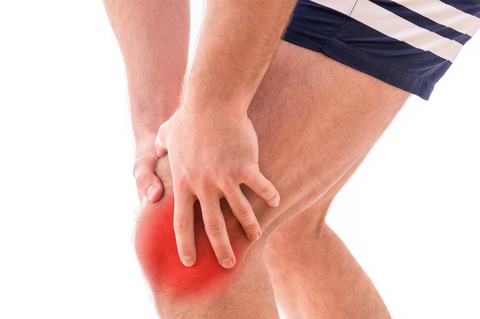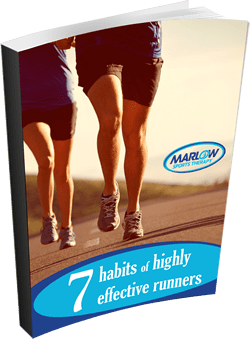
There are a number of causes of knee injury and knee pain. An orthopedic surgeon described the knee to me as three joints in one, allowing your knee to twist, pivot and glide in varying degrees to help support our body when walking, running, climbing and squatting.
Firstly, the patella-femoral joint (kneecap) creates more leverage and power for kicking. And secondly, the medial and lateral condyles of the femur working independently for ease of movement.
Traumatic Knee Injuries
Apart from bumps and cuts, traumatic injuries include:
- Quadricep and/or patella tendon injuries
- Medial (MCL) and Lateral (LCL) collateral ligament sprains/tears
- Meniscal (fibro-cartilage) sprains/brusing
- Anterior or posterior cruciate ligament (ACL / PCL) strains/tears
- Articular (hyaline) cartilage injury
- Patella fracture, dislocation or subluxation
- Femur or Tibia bone fractures
All the above will need immediate First Aid and depending on severity, A&E assessment by a doctor. And they will determine the treatment. However to ensure full recovery, rehabilitation can be just as important as the initial treatment. A sports therapist can out together a full knee treatment and rehabilitation programme for you.
It is possible to experience traumatic soft tissue injuries to the knee (or shoulder) joint without much force. A ‘minor’ twist may have overloaded a seemingly healthy joint and cause knee pain, because of underlying soft tissue weakness. Typically, this weakness is either because of a past history of years of competitive sport/exercise has caused wear within the joint. Or the opposite, a generally sedentary lifestyle has weakened the muscles and structures around the knee over time and a particular movement overloads the joint. The injury risk increases with age, but the lesson for life is everything in moderation, including moderation..!
Cartilage, cruciate ligaments and menisci are inside the knee joint, with very little blood supply. Therefore, surgery maybe required to replace or repair structural damage or deterioration within the knee. Conservative (non-surgical or non-invasive) treatment is can also advocated depending on factors such as severity, age and work/sport. Non-invasive is generally the recommended form of treatment for all ‘over-use’ injuries…
Overuse Knee Injuries
- Cartilage deterioration (OsteoArthritis)
- Patella-femoral pain (jumpers knee)
- ITB Syndrome (runners knee)
- Osgood-Schlatters (‘growing pains’)
- Knee bursitis (housemaid knee)
- Quadricep or Hamstring distal tendinopathy
- Referred pain from thigh and/or glute muscles
All of the above are generally caused by the knee joint being subjected to load too much, too soon. There has been no history of a bad fall or twist. Structurally the knee is normal, however muscles, ligaments or tendons around the knee can become overloaded over time. And then the joint produces pain and swelling. It should be remembered that the cause of pain is seldom the knee itself, especially if there is no history of past injury and if you are under 60 years old.
‘Overuse pain’ from the knee is normally a sign of movement disfunction or muscular imbalance. It can be a weakness in the muscles across the knee (Quadriceps, Hamstrings and Gastrocnemius muscles), but very often we find issues in the hips or ankles which ‘bully’ the knee joint. We would always check the mobility and strength in your hips, lower back and ankles if suspecting an overuse injury with knee pain…
The ‘PEACE & LOVE’ first aid protocol can be used for all types of overuse injury. Initial symptoms of an overuse injury can be very similar to an acute injury but symptoms normally settle down very quickly. And you can then move on to modifying your training/work to start the rehabilitation process. The issue can become problematic when you ignore initial symptoms and start activity again without modifying either the activity or the way you are moving. Its extremely common to get into a cycle of pain-rest-pain-rest-more pain…
Treatment and Rehab for Knee Pain
At Marlow Sports Therapy we typically get best results when treating knee pain caused by soft-tissue, overuse injuries. Many treatments would be the same regardless if tendon, ligament or muscle injury. Manual Therapy, exercise and laser therapy are some of the modalities we use to get you out of pain and back to your favourite sport/exercise as quickly as possible.
We consider the hips and hip/thigh muscles extremely important for the function of the knee and would look to improve flexibility and strength of your hips as a priority. An example stretch is below:
When starting to exercise its always important to start at a low load, basic level and patiently work to strengthen the legs in a progressive, balanced way. Gauge your level of progress on how you feel.
Knee pain can often just be a symptom of bad technique when running. Download our free ebook 7 Habits of Highly Effective Runners and see if any of the habits can resolve your pain.
If you’d like further help or advice please contact us and/or arrange and appointment.

 Enter your name and email and request our free ebook: 7 Habits of Highly Effective Runners
Enter your name and email and request our free ebook: 7 Habits of Highly Effective Runners